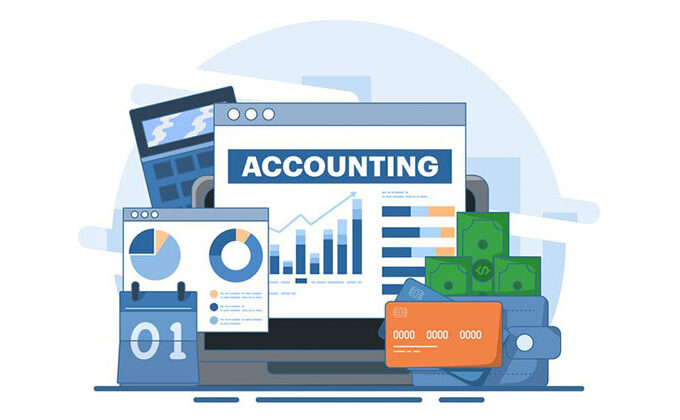I’ve looked into various financial reporting software, and Oracle NetSuite is the most comprehensive option I’ve seen due to its real-time transparency, flexible analytics, and native integration with the core business systems. I am awestruck by how it’s designed to scale and handle complex requirements, such as multi-entity consolidation and regulatory compliance.
Some of the top financial reporting software have specific strengths, for instance, Datarails for teams who want financial reporting without removing Excel, and Workiva for ensuring audit-ready and compliant reporting in large companies.
Top 5 Financial Reporting Software
Larger companies have more complicated reporting needs, such as consolidating data across entities or ensuring compliance with strict auditing standards. We’ll look at the best financial reporting software to cope with the demands of enterprise-level operations.
1. Vena
If you are looking for efficient financial reporting software, Vena emerges as a flexible tool that can streamline your financial processes. Vena seamlessly integrates with a variety of General Ledger and ERP systems, removing the burden of manually creating spreadsheets and increasing financial reporting. With its easy-to-use interface and customizable templates, Vena allows you to concentrate on strategic planning and decision-making, making it a great option for companies across a variety of sectors.
Pros:
- Usually quick to implement
- Preconfigured templates and reports
- Leverages familiar Excel interface
Cons:
- No mobile app
- Some compatibility issues with Mac
Also read: Best Account Management Software for Businesses in 2025 [Compared]
2. Oracle NetSuite
NetSuite is notable for its real-time reporting capabilities, robust compliance tools, and seamless consolidation across multiple entities. This financial reporting software has built-in reports and dashboards that allow you to create a custom-designed dashboard for various audiences, and its robust integrations help unify data across departments. It’s a great option for organizations that require high-end control and visibility.
But its complexity and price could be higher than what smaller teams require. Solutions such as Fathom or Datarails allow for faster installation and easier interfaces if you value simplicity over ERP-level depth.
Pros
- AI-powered insights for modeling and analysis
- Quick to adopt with minimal disruption
- Deep Excel integration with automation
Cons
- Limited governance controls
- Hard to trace data in complex models
- Basic compliance features
3. Workiva
Workiva is the financial reporting software for your company that has stringent regulatory requirements. It consolidates financial and ESG and Risk information in an audit system and supports SEC, SOX, and other regulatory filings with automated workflows, data validation, and complete traceability. The real-time collaboration capabilities and AI-powered controls make it especially valuable if you have a public company or a large finance team.
But if you don’t have complex reporting and audit demands, Workiva may be more than you need. More basic tools, such as Fathom or Datarails, have strong analytics and a simpler setup, especially for teams focused on reporting performance over compliance with regulatory requirements.
Pros
- Direct regulatory filing with audit-ready reporting
- Excellent compliance support with audit trails and controls
- Real-time collaboration and consistent data linking
- Automated workflows with extensive integrations
Cons
- Steep learning curve for non-compliance teams
- Higher cost is unsuitable for small businesses
- Not Excel-native, limiting ad hoc flexibility
4. Datarails
Datarails is my preferred choice for Excel-based reporting since it enables your finance teams to use the tools to automate consolidation and analysis. It improves Excel by enabling real-time collaboration, custom dashboards, and AI built in that make reporting quicker and more informative without disrupting workflows.
However, Datarails lacks the structured controls that more complex or restricted teams may require. If audit trails and workflow management are important to you, I suggest Vena, which provides more control while still preserving your Excel experience.
Pros
- AI-powered insights for better scenario modeling and analysis
- Quick setup with minimal workflow disruption
- Strong Excel integration with flexible automation
Cons
- Limited governance and workflow controls
- Data tracing can be difficult in complex models
- Basic compliance tools compared to enterprise platforms
5. Fathom
I would recommend Fathom to anyone on a multi-entity team who needs rapid, visually rich reporting without the hassle. It’s easy to combine data, create elegant management reports, and even run cash flow forecasts or what-if scenarios with an interface that’s available to non-finance and finance users alike.
But it’s not designed for heavy compliance or ERP-level management. If your company requires audit trails, enterprise-level governance, or greater system integration, you’ll discover better solutions in platforms such as Workiva and NetSuite.
Pros
- Fast, visual reporting and KPI dashboards
- Easy multi-entity consolidation and group reporting
- Automated, visual dashboards with performance summaries
- Seamless integration with Xero, QuickBooks, MYOB, and Excel
Cons
- Limited compliance and audit tools
- Basic forecasting and scenario modeling
- May not scale well for complex organizations
Also read: Top 10 Data Entry Software for Faster and Accurate Work
Accounting software vs financial reporting software
Accounting software focuses on bookkeeping fundamentals (like invoicing and payroll, bank reconciliation, and tax preparation), typically with built-in reports for creating basic financial statements. In short, Accounting software is the financial foundation and ensures that transactions are properly classified and stored correctly
Financial reporting software, on the other hand, is placed on top of the data, making it useful for analysis, forecasting, and decision-making. These allow businesses to consolidate data from different departments or companies and automate regulatory filings, and create dashboards and visual reports that are standard for accounting software. They also support real-time scenario modeling, data updates, and stakeholder-specific reporting that are usually not available or limited in general accounting systems.
Conclusion
A business cannot be prosperous without assistance. Be it by a team of highly skilled experts or machine learning technology, the most successful companies let go of the workload so they can focus on expanding.
With the right financial reporting software, companies can streamline their financial operations and gain deeper insight, and make data-driven decisions that boost expansion.
FAQs: Financial Reporting Software
What is Financial Reporting Software?
Financial reporting software helps businesses automate financial data collection, analysis, and report generation. It simplifies accounting, ensures accuracy, and keeps audits organized.
Which is the best Financial Reporting Software in 2025?
Top choices include Workiva, Vena, Fathom, Oracle NetSuite, and Zoho Books for audit-ready financial reporting.
Can Financial Reporting Software integrate with Excel?
Yes, many tools like Vena and Fathom integrate seamlessly with Excel for flexible and familiar financial reporting.
Can Financial Reporting Software handle multi-entity reporting?
Yes, advanced tools like Workiva and NetSuite support multi-entity consolidation and group financial reporting.















Leave a comment